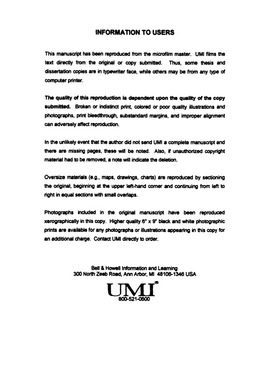| dc.contributor.advisor | Gilman, Patricia A., | en_US |
| dc.contributor.author | Powell, Valli Sue. | en_US |
| dc.date.accessioned | 2013-08-16T12:30:52Z | |
| dc.date.available | 2013-08-16T12:30:52Z | |
| dc.date.issued | 2000 | en_US |
| dc.identifier.uri | https://hdl.handle.net/11244/5947 | |
| dc.description.abstract | The research focuses on the Mogollon Mimbres region of the North American Southwest, and, in particular, on the Mimbres Valley of southwestern New Mexico, the heartland of Mimbres society. The Mimbres black-on-white iconographic vessels were made by ancient people of this area, who lived in one of the earliest aggregated societies in the Southwest and produced some of the most sophisticated ceramics in prehistoric North America. Ceramic samples for testing the defining and mediating role of the icons in group formation come from five study sites representative of the Mimbres region: Galaz, NAN Ranch, and Old Town in the upper, middle, and lower Mimbres Valley, and two outliers, Cameron Creek and Saige-McFarland. Spatial and temporal patterns of the icons are defined through compositional and design analyses which quantitatively measure exchange and iconographic sharing. Instrumental neutron activation analysis of Mimbres black-on-white sherds by indicating production loci confirms differential exchange of Mimbres vessels. Microseriational design analysis shows that certain iconographies were preferred over others at certain villages. Distribution patterns from the compositional and stylistic analytic data are complimentary indicating that some villages were socially linked into groups through exchange and icon preferences. Exchange-iconographic patterns co-occur with environmental changes allowing an inference that iconography was actively functional, rather than passive reflective, in defining and mediating group memberships. | en_US |
| dc.description.abstract | The relationship between iconography and group formation within the context of a non-stratified, aggregated prehistoric society is examined. The research tests the idea that iconographic designs on Mimbres black-on white pottery during the late Late Pithouse and Classic periods (A.D. 970--1140) functioned in the formation and reformation of groups. Spatial and temporal changes in the distribution of iconographic designs which associate with social and environmental fluctuations of increased agricultural dependence, growing population, environmental variability, and the concomitant risks inherent in early horticulture in a semi-arid region are demonstrated. | en_US |
| dc.description.abstract | The research provides pertinent data concerning group responses to economic uncertainty, the mediating role of ceramic iconography in the Mimbres society, the methodological use of stylistic patterning for identifying group formation, and a production and use distribution data base of Mimbres iconographic vessels. | en_US |
| dc.format.extent | xii, 243 leaves : | en_US |
| dc.subject | Anthropology, Archaeology. | en_US |
| dc.subject | Mimbres pottery. | en_US |
| dc.subject | Mimbres culture. | en_US |
| dc.subject | New Mexico Antiquities. | en_US |
| dc.subject | Mimbres pottery Themes, motives. | en_US |
| dc.title | Iconography and group formation during the Late Pithouse and Classic periods of the Mimbres society, A.D. 970--1140. | en_US |
| dc.type | Thesis | en_US |
| dc.thesis.degree | Ph.D. | en_US |
| dc.thesis.degreeDiscipline | Department of Anthropology | en_US |
| dc.note | Adviser: Patricia A. Gilman. | en_US |
| dc.note | Source: Dissertation Abstracts International, Volume: 61-02, Section: A, page: 0660. | en_US |
| ou.identifier | (UMI)AAI9962976 | en_US |
| ou.group | College of Arts and Sciences::Department of Anthropology | |
